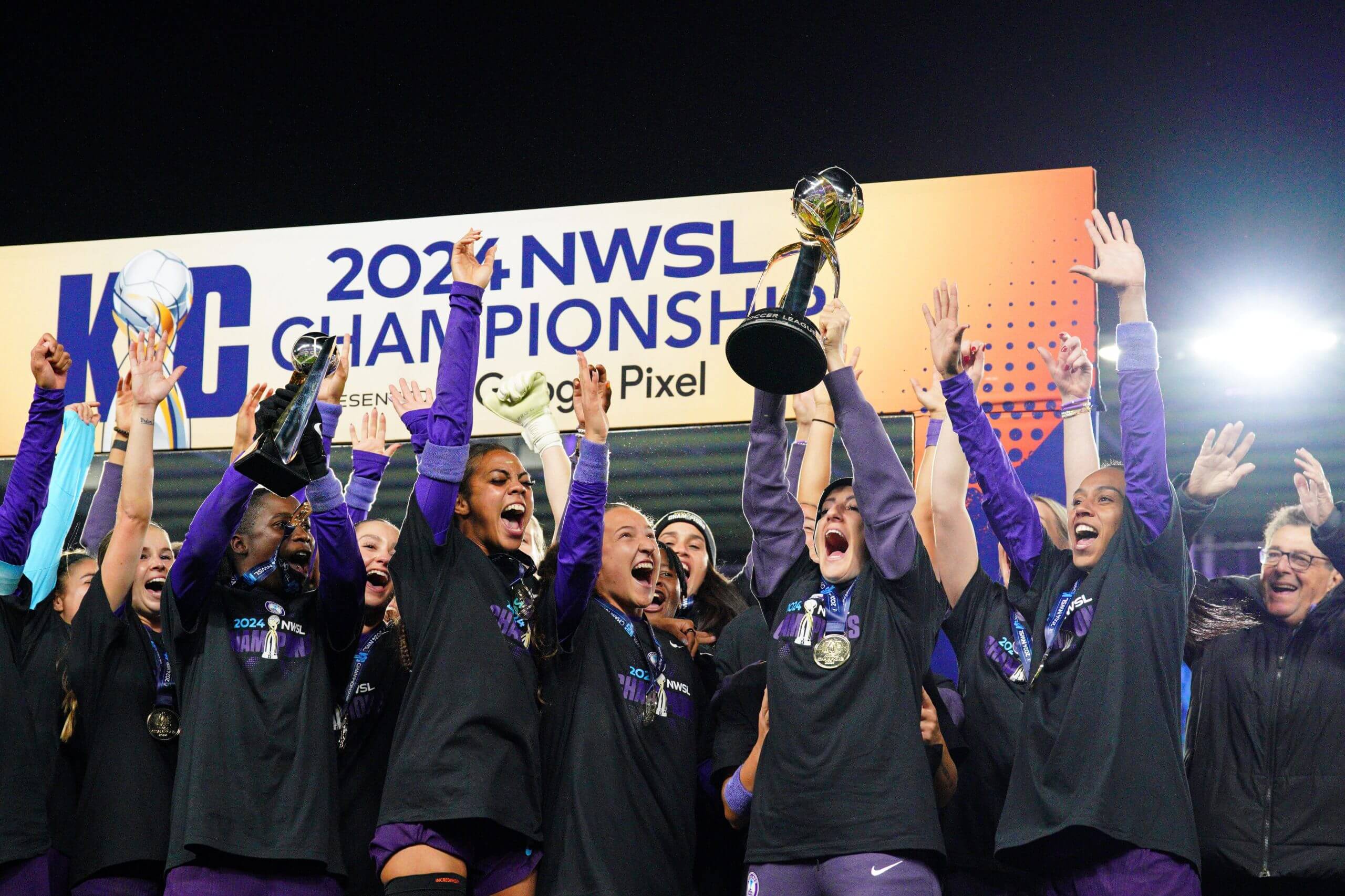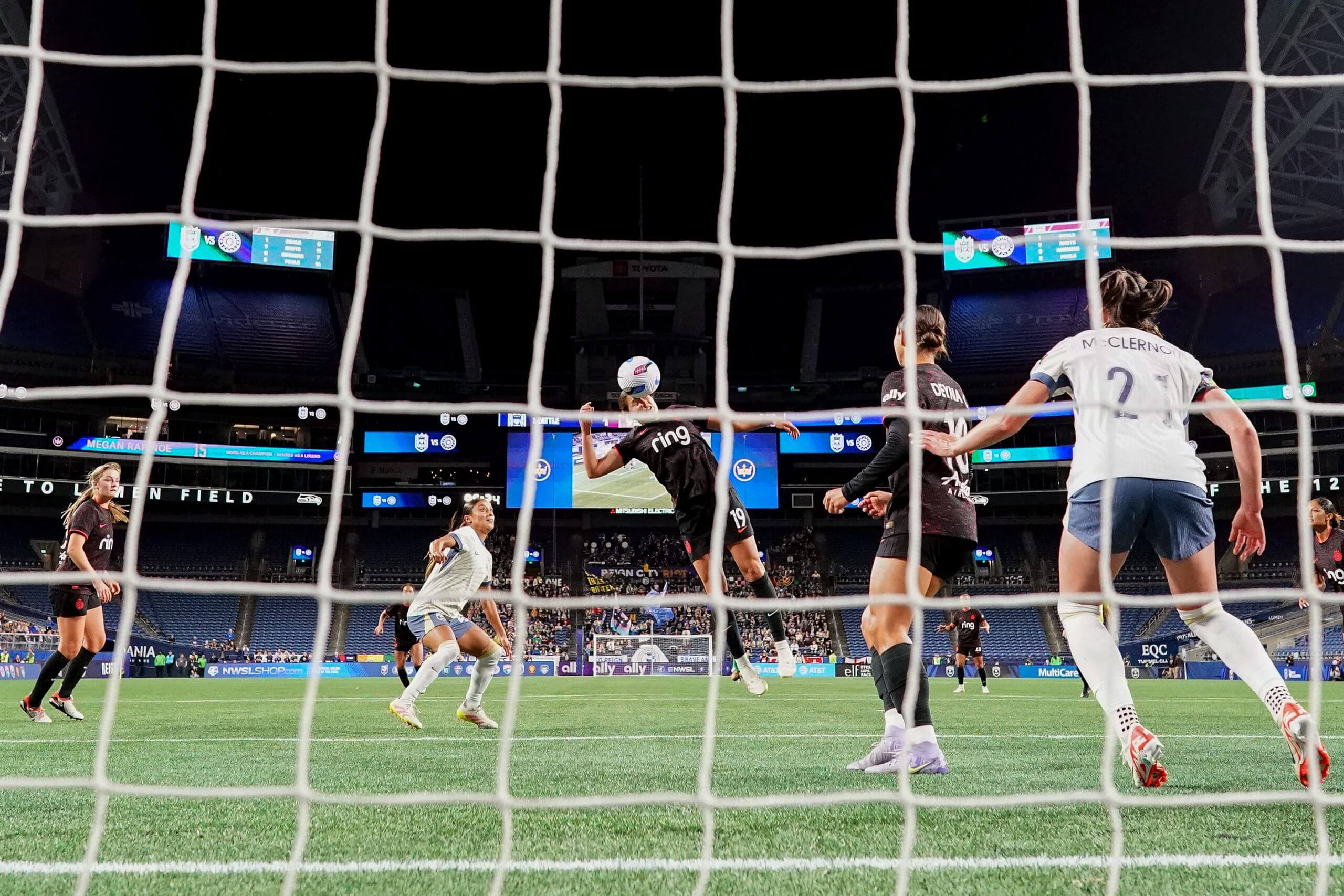
On Friday, the National Women’s Soccer League’s application to launch a Division II league in 2026 became public.
In a letter to U.S. Soccer CEO JT Batson, NWSL commissioner Jessica Berman formally outlined the league’s proposal. CBS Sports was first to report the application, and The Athletic corroborated the document’s existence. In the letter, Berman said establishing a second division was “essential for the development and sustainability” of the NWSL.
Advertisement
The proposal included an outline of eight founding teams affiliated with eight existing NWSL clubs — the North Carolina Courage, Kansas City Current, Racing Louisville, NJ/NY Gotham FC, Orlando Pride, Bay FC, Seattle Reign and Washington Spirit.
However, not all of the teams listed in the proposal were on board before the information was submitted, according to sources with knowledge of the situation who requested anonymity due to its ongoing nature. Some of the pushback centered on the price of operating a second team.
NWSL’s proposal states that the second division would use infrastructure and share ownership as a way to qualify for U.S. Soccer’s Professional League Standards, which includes having at least six teams in year one and eight by year three, with half based in metro areas of 500,000-plus and stadiums holding at least 2,000. The documents said NWSL intends to have all Division I clubs operating a Division II team within the first four years of operation.

Orlando Pride celebrate winning the 2024 NWSL Championship (Denny Medley-Imagn Images)
While many in the league were in favor of the idea of a second division at some point, the nature of the rollout caused some mixed feelings, according to multiple sources. Kansas City Current, which became the first NWSL team to play in its own purpose-built stadium last year, is one of the strongest proponents of adding a second division.
U.S. Soccer must approve any sanctioning and sources said nothing has been officially discussed league-wide. Here’s what you need to know about the proposed expansion of NWSL’s development…
Does the application for sanctioning mean the Division II league will happen?
The league applied for Division II sanctioning to ensure the paperwork was in place before many of the more concrete details of a potential lower-division league had been agreed upon, according to multiple sources around the league with knowledge of the NWSL’s intentions to expand.
There’s certainly a chance that the league isn’t ready for a 2026 launch, or that it wouldn’t exactly resemble what the NWSL submitted in its sanctioning request. Rather than a guarantee, many people in the game sense that this was a proactive move intended to allow the NWSL to launch a league if everything comes together.
Advertisement
The NWSL already has a significant amount of work on its plate for the 2026 season, launching two first-division expansion teams in Denver and Boston as well as operating around the 2026 men’s World Cup in the United States, Canada and Mexico.
Asking eight teams to build out additional front office and technical staff and assemble a second roster, with to-be-determined minimum standards for a DII league, is not light work. The NWSL itself has not designated any staff for a second league yet. The league hired Karla Thompson as its director of youth development last September, though the press release described her role as building connections between the league and the landscape of youth soccer.
Meg Linehan
Which teams are involved in the NWSL’s initial Division II request? And when would it start?
The NWSL proposal includes eight Division II teams tied to the following existing NWSL clubs: Bay FC, Kansas City Current, NJ/NY Gotham, North Carolina Courage, Orlando Pride, Racing Louisville, Seattle Reign and Washington Spirit.
According to documents independently corroborated by The Athletic, the goal is for every NWSL team to have its own Division II squad within the next four years. NWSL’s application language suggests that the league will welcome independent teams as well.
However, according to multiple sources briefed on the plans, not every team owner was on board at the time of the proposal.
Asli Pelit
Where will the teams play?
Based on the league’s sanctioning proposal, the NWSL wants each DII team to play at the home of the DI team.
For a league that struggles already with facilities and scheduling matches, this feels like a stretch. According to the sanctioning document, for instance, Seattle is intended to be one of the first eight teams ready for the 2026 launch. Reign FC shares Lumen Field with the Seattle Sounders in Major League Soccer and the facilities owners, the Seattle Seahawks in the NFL. It has a capacity of more than 68,000 and will host six men’s World Cup matches in June and July 2026.

Seattle Reign taking on Portland Thorns at Lumen Field this month (Soobum Im/NWSL via Getty Images)
For teams that don’t control their venues, new contracts for seven additional dates would have to be arranged, and it’s fair to expect these dates would not be any less expensive than a normal NWSL game day for the teams.
The two teams would also share training facilities as well, and the league’s plan is for each team to rely on both their existing staff for the Division I club, as well as retain new staff specifically for the lower-division team.
Meg Linehan
Is promotion/relegation a possibility?
While the NWSL has left the door open for independent teams to become a part of the proposed DII league, there’s no mention of promotion and relegation in the league’s sanctioning document. Even with the few concrete details we do have around the proposed DII league, it’s hard to imagine the introduction of promotion and relegation if every NWSL club is required to have a DII team by 2030.
Advertisement
The NWSL wouldn’t want to open the door to the chance that both the first and second division teams in the same market end up in the same league, or that a market might end up with two second division teams.
The aim here for the NWSL is player development, and offering up another avenue alongside or as an alternative to NCAA play for younger players, not undermining its main product. It’s far more likely that if the NWSL does get this league off the ground, four distinct sanctioned professional leagues — plus those existing in the amateur and pre-professional ranks — provide enough infrastructure to finally get a women’s Open Cup up and running with meaningful stakes.
Meg Linehan
What does women’s soccer in the U.S. look like now then?
In addition to the NWSL, there are two more professional women’s soccer leagues: the Division I USL Super League and the new WPSL Pro.
The USL Super League is run by the United Soccer League.
Last week, WPSL Pro, which was originally slated as a Division III league, announced plans to launch a new Division II women’s pro league in 2026. It aims to fill the gap between college soccer and the top-tier leagues. The league is awaiting sanctioning from U.S. Soccer.
There is no officially sanctioned Division II or Division III women’s soccer league in the U.S.
Asli Pelit
What is the landscape of player development in the U.S.?
Players make their way into the professional leagues through a few different paths: youth academies, college soccer and the relatively new Under-18 Entry Mechanism, which the league introduced in 2021 after Olivia Moultrie, then 15 years old, sued the league to go pro. Her case cracked the door open for other young talent to skip college entirely, but in reality, college soccer is still a key pipeline despite its changing landscape.
The most recent collective bargaining agreement, signed by the players and the league, abolished the college draft and opened the door for every new player to enter the league as a free agent.
And then there is the national team pathway. Playing in the U.S. youth national team system means access to elite training programs in the country and also exposes players to scouts from clubs around the world. When Washington Spirit owner Michele Kang invested more than $25 million in U.S. Soccer, the funds were earmarked, in part, to expand the youth national team system and increase player development standards.
Advertisement
All of these routes feed into NWSL and the USL Super League, but the system is still fragmented and lacks a cohesive professional bridge between player development and top-tier soccer experience.
Asli Pelit
Is this a good idea for NWSL?
The short answer is yes, but only if it is done right.
As the league expands, the talent gap becomes increasingly hard to ignore. The primary path to top-tier U.S. women’s soccer runs through colleges and youth academies, but most rookies aren’t getting the minutes they need once they reach the NWSL. A second-division league could provide a crucial training ground for emerging talent, giving young players much-needed play time, accelerating their adaptation, and easing their transition into elite soccer.
But the league must focus on building this new division sustainably, securing a solid financial structure and long-term sustainable model, all the way down to youth academies where proper player development should begin.
Asli Pelit
As a theoretical, yes — it’s always been a matter of time until the NWSL sorted out a more meaningful entry into player development. Most people expected youth academies rather than a lower-division league, though both could still be on the table in the long run. There are still many elements of this that give me pause based on what we know and where the league is at right now, however.
We certainly do not know enough about what this potential DII league would look like, beyond a few basics sketched out in the NWSL’s sanctioning proposal. The NWSL is incentivized to help build out pathways for player development, but are all of its teams truly ready to support two teams (even with some shared infrastructure), considering potential costs? Considering the tepid reaction on Friday from the clubs when asked about their participation, this remains a big TBD.
Meg Linehan
Additional contributor: Adam Crafton
(Top photo: Kylie Graham/Imagn Images)
This news was originally published on this post .






Be the first to leave a comment